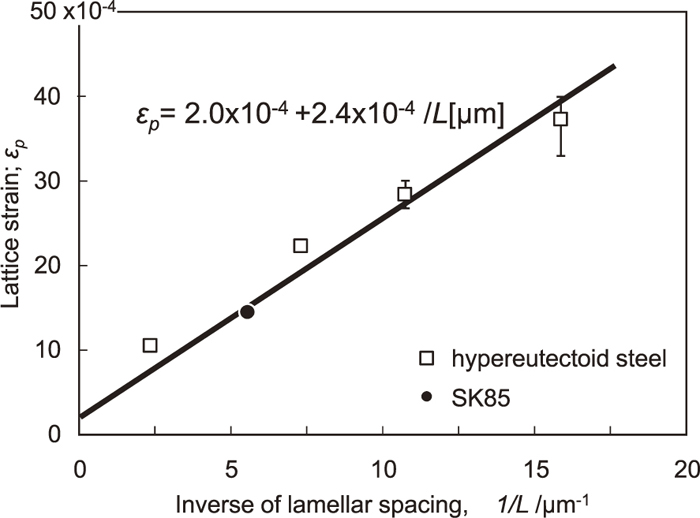55 巻, 11 号
選択された号の論文の32件中1~32を表示しています
- |<
- <
- 1
- >
- >|
Fundamentals of High Temperature Processes
Regular Article
-
原稿種別: Regular Article
2015 年 55 巻 11 号 p. 2273-2282
発行日: 2015/11/15
公開日: 2015/12/02
[早期公開] 公開日: 2015/09/15PDF形式でダウンロード (1492K) HTML形式で全画面表示 -
原稿種別: Regular Article
2015 年 55 巻 11 号 p. 2283-2288
発行日: 2015/11/15
公開日: 2015/12/02
PDF形式でダウンロード (1066K) HTML形式で全画面表示 -
原稿種別: Regular Article
2015 年 55 巻 11 号 p. 2289-2296
発行日: 2015/11/15
公開日: 2015/12/02
PDF形式でダウンロード (1562K) HTML形式で全画面表示 -
原稿種別: Regular Article
2015 年 55 巻 11 号 p. 2297-2303
発行日: 2015/11/15
公開日: 2015/12/02
PDF形式でダウンロード (1339K) HTML形式で全画面表示 -
原稿種別: Regular Article
2015 年 55 巻 11 号 p. 2304-2309
発行日: 2015/11/15
公開日: 2015/12/02
[早期公開] 公開日: 2015/09/08PDF形式でダウンロード (2078K) HTML形式で全画面表示 -
原稿種別: Regular Article
2015 年 55 巻 11 号 p. 2310-2317
発行日: 2015/11/15
公開日: 2015/12/02
[早期公開] 公開日: 2015/09/08PDF形式でダウンロード (1222K) HTML形式で全画面表示 -
原稿種別: Regular Article
2015 年 55 巻 11 号 p. 2318-2324
発行日: 2015/11/15
公開日: 2015/12/02
PDF形式でダウンロード (1114K) HTML形式で全画面表示 -
原稿種別: Regular Article
2015 年 55 巻 11 号 p. 2325-2331
発行日: 2015/11/15
公開日: 2015/12/02
PDF形式でダウンロード (1054K) HTML形式で全画面表示
Ironmaking
Regular Article
-
原稿種別: Regular Article
2015 年 55 巻 11 号 p. 2332-2341
発行日: 2015/11/15
公開日: 2015/12/02
[早期公開] 公開日: 2015/09/08PDF形式でダウンロード (2465K) HTML形式で全画面表示 -
原稿種別: Regular Article
2015 年 55 巻 11 号 p. 2342-2349
発行日: 2015/11/15
公開日: 2015/12/02
PDF形式でダウンロード (1257K) HTML形式で全画面表示 -
原稿種別: Regular Article
2015 年 55 巻 11 号 p. 2350-2357
発行日: 2015/11/15
公開日: 2015/12/02
PDF形式でダウンロード (1381K) HTML形式で全画面表示
Steelmaking
Regular Article
-
原稿種別: Regular Article
2015 年 55 巻 11 号 p. 2358-2364
発行日: 2015/11/15
公開日: 2015/12/02
PDF形式でダウンロード (1194K) HTML形式で全画面表示 -
原稿種別: Regular Article
2015 年 55 巻 11 号 p. 2365-2373
発行日: 2015/11/15
公開日: 2015/12/02
[早期公開] 公開日: 2015/09/15PDF形式でダウンロード (1535K) HTML形式で全画面表示
Casting and Solidification
Regular Article
-
原稿種別: Regular Article
2015 年 55 巻 11 号 p. 2374-2382
発行日: 2015/11/15
公開日: 2015/12/02
PDF形式でダウンロード (1567K) HTML形式で全画面表示 -
原稿種別: Regular Article
2015 年 55 巻 11 号 p. 2383-2390
発行日: 2015/11/15
公開日: 2015/12/02
PDF形式でダウンロード (1679K) HTML形式で全画面表示
Chemical and Physical Analysis
Regular Article
-
原稿種別: Regular Article
2015 年 55 巻 11 号 p. 2391-2396
発行日: 2015/11/15
公開日: 2015/12/02
[早期公開] 公開日: 2015/09/08PDF形式でダウンロード (1027K) HTML形式で全画面表示
Forming Processing and Thermomechanical Treatment
Regular Article
-
原稿種別: Regular Article
2015 年 55 巻 11 号 p. 2397-2405
発行日: 2015/11/15
公開日: 2015/12/02
PDF形式でダウンロード (1464K) HTML形式で全画面表示 -
原稿種別: Regular Article
2015 年 55 巻 11 号 p. 2406-2415
発行日: 2015/11/15
公開日: 2015/12/02
PDF形式でダウンロード (1554K) HTML形式で全画面表示 -
原稿種別: Regular Article
2015 年 55 巻 11 号 p. 2416-2425
発行日: 2015/11/15
公開日: 2015/12/02
PDF形式でダウンロード (1802K) HTML形式で全画面表示 -
原稿種別: Regular Article
2015 年 55 巻 11 号 p. 2426-2434
発行日: 2015/11/15
公開日: 2015/12/02
PDF形式でダウンロード (3303K) HTML形式で全画面表示
Welding and Joining
Regular Article
-
原稿種別: Regular Article
2015 年 55 巻 11 号 p. 2435-2442
発行日: 2015/11/15
公開日: 2015/12/02
[早期公開] 公開日: 2015/09/15PDF形式でダウンロード (1767K) HTML形式で全画面表示
Surface Treatment and Corrosion
Regular Article
-
原稿種別: Regular Article
2015 年 55 巻 11 号 p. 2443-2449
発行日: 2015/11/15
公開日: 2015/12/02
PDF形式でダウンロード (2073K) HTML形式で全画面表示
Transformations and Microstructures
Regular Article
-
原稿種別: Regular Article
2015 年 55 巻 11 号 p. 2450-2454
発行日: 2015/11/15
公開日: 2015/12/02
[早期公開] 公開日: 2015/09/15PDF形式でダウンロード (900K) HTML形式で全画面表示 -
原稿種別: Regular Article
2015 年 55 巻 11 号 p. 2455-2462
発行日: 2015/11/15
公開日: 2015/12/02
PDF形式でダウンロード (962K) HTML形式で全画面表示
Note
-
原稿種別: Note
2015 年 55 巻 11 号 p. 2515-2517
発行日: 2015/11/15
公開日: 2015/12/02
PDF形式でダウンロード (972K) HTML形式で全画面表示
Mechanical Properties
Regular Article
-
原稿種別: Regular Article
2015 年 55 巻 11 号 p. 2463-2468
発行日: 2015/11/15
公開日: 2015/12/02
PDF形式でダウンロード (1208K) HTML形式で全画面表示 -
原稿種別: Regular Article
2015 年 55 巻 11 号 p. 2469-2476
発行日: 2015/11/15
公開日: 2015/12/02
[早期公開] 公開日: 2015/09/08PDF形式でダウンロード (1439K) HTML形式で全画面表示
Physical Properties
Regular Article
-
原稿種別: Regular Article
2015 年 55 巻 11 号 p. 2477-2482
発行日: 2015/11/15
公開日: 2015/12/02
[早期公開] 公開日: 2015/09/08PDF形式でダウンロード (1712K) HTML形式で全画面表示 -
原稿種別: Regular Article
2015 年 55 巻 11 号 p. 2483-2491
発行日: 2015/11/15
公開日: 2015/12/02
PDF形式でダウンロード (1377K) HTML形式で全画面表示 -
原稿種別: Regular Article
2015 年 55 巻 11 号 p. 2492-2498
発行日: 2015/11/15
公開日: 2015/12/02
PDF形式でダウンロード (1422K) HTML形式で全画面表示
Social and Environmental Engineering
Regular Article
-
原稿種別: Regular Article
2015 年 55 巻 11 号 p. 2499-2508
発行日: 2015/11/15
公開日: 2015/12/02
PDF形式でダウンロード (2651K) HTML形式で全画面表示 -
原稿種別: Regular Article
2015 年 55 巻 11 号 p. 2509-2514
発行日: 2015/11/15
公開日: 2015/12/02
PDF形式でダウンロード (1195K) HTML形式で全画面表示
- |<
- <
- 1
- >
- >|

 ,
,  and
and  , and the equilibrium constant for the TiN formation reaction in liquid iron, logKTiN were newly determined. The interaction parameters showed no temperature dependence in this temperature range. The calculated solubility product of titanium and nitrogen for TiN formation in liquid iron was in excellent agreement with the available experimental results measured at various temperatures.
, and the equilibrium constant for the TiN formation reaction in liquid iron, logKTiN were newly determined. The interaction parameters showed no temperature dependence in this temperature range. The calculated solubility product of titanium and nitrogen for TiN formation in liquid iron was in excellent agreement with the available experimental results measured at various temperatures.
